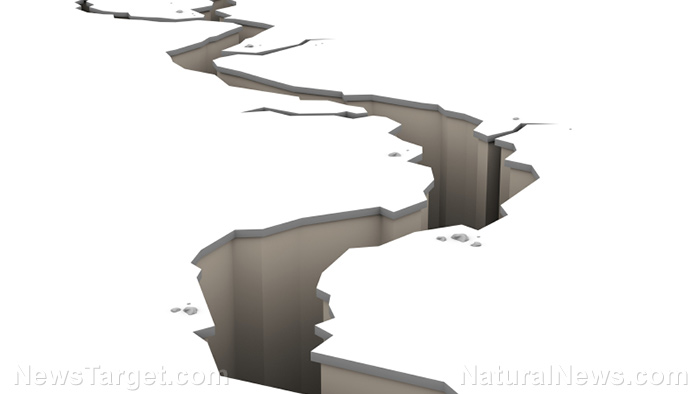
FEMA predicts that at least 13,000 people will die during the Cascadia quake and tsunami, and another 27,000 will be injured.
The Cascadia subduction zone
As Strange Sounds reports, the Cascadia subduction zone has captivated scientists for years. Located just north of the San Andreas Fault, the Cascadia marks where an oceanic plate, Juan de Fuca, slides beneath the North American tectonic plate.
This is also known as "subducting," -- that's why the fault line is called a "subduction zone." The name "Cascadia" comes from the nearby Cascade Range, a chain of volcanic mountains.
Most of the time, tectonic plate movement goes unnoticed -- but sometimes, where borders meet, it is very noticeable. Experts say that the North America plate has gotten "stuck" on the Juan de Fuca. The plates can deal with this for quite some time, but eventually a "rebound" will occur.
Strange Sounds explains:
If, on that occasion, only the southern part of the Cascadia subduction zone gives way—your first two fingers, say—the magnitude of the resulting quake will be somewhere between 8.0 and 8.6. That’s the big one. If the entire zone gives way at once, an event that seismologists call a full-margin rupture, the magnitude will be somewhere between 8.7 and 9.2. That’s the very big one.
It's estimated that the quake will impact everything around it for 140,000 square miles. An array of cities fall into this danger zone. In Washington: Seattle, Tacoma, and Olympia; and in Oregon: Portland, Eugene, and Salem. FEMA expects that there will be at least one million people displaced by the catastrophic seismic event.
Reports suggest that in all, some seven million people will be affected if and when the Cascadia subduction zone goes off.
When the quake comes
Scientists are still struggling to make predictions about when the Cascadia might rupture. The first sign the rupture has actually happened will be a "compressional wave," which feels like a sudden jolt but not considered dangerous. These waves travel fast enough to be detected 30 to 90 seconds before other seismic waves.
This valuable time can be used to deploy earthquake response measures, but the PNW is wholly unprepared for such a disastrous earthquake.
Strange Sounds explains both Oregon and Washington face the real risk that the earthquake will cause many other small disasters. Once the quake starts, it can start a process called "liquefaction," wherein solid ground starts behaving like water.
As reported:
Fifteen per cent of Seattle is built on liquefiable land, including seventeen day-care centers and the homes of some thirty-four thousand five hundred people. So is Oregon’s critical energy-infrastructure hub, a six-mile stretch of Portland through which flows ninety per cent of the state’s liquid fuel and which houses everything from electrical substations to natural-gas terminals. Together, the sloshing, sliding, and shaking will trigger fires, flooding, pipe failures, dam breaches, and hazardous-material spills.
The damage done by any number or combination of these incidents may well exceed the actual earthquake. Cascadia hasn't experienced a major earthquake since 1700, and experts are concerned that it is long overdue. Recent tidal gauge data has captured an uptick in seismic activity. Whether it's the "big one" or the "really big one," preparedness ought to be a top priority for residents of the Pacific Northwest.
Learn more about preparing for disaster at Preparedness.news.
Sources for this article include:
Please contact us for more information.




















